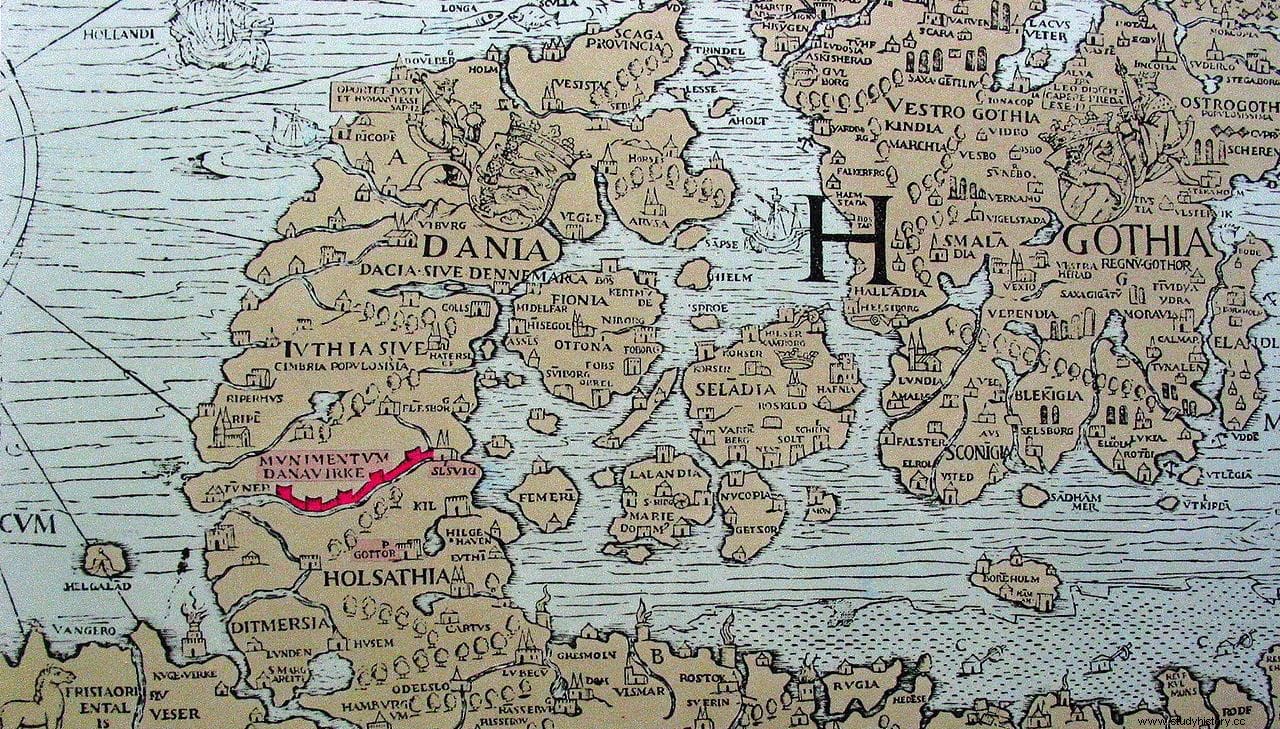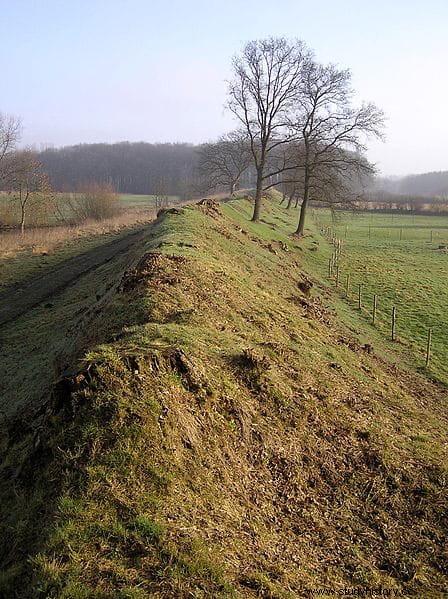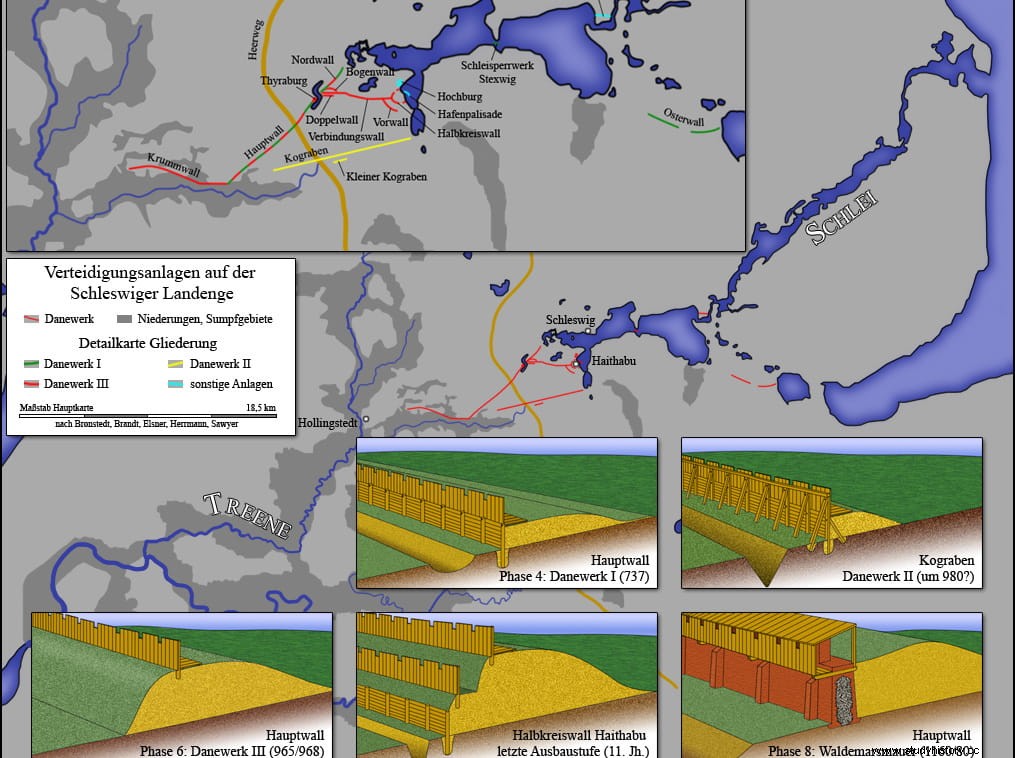Before getting into the matter, it should be clarified that the dates of the Iron Age in Scandinavia do not correspond to those of other areas such as the Mediterranean fringe or the Near East. In Scandinavia the Iron Age began around 500 BC. and lasted until at least 800 AD, when the Viking Age begins.
It is therefore during this Nordic Iron Age, (according to historians before the year 500 AD), when the Danos, a Germanic tribe that inhabited areas of southern Sweden and the current Jutland peninsula and Danish islands, began a titanic work:a fortified barrier that crossed the peninsula from one side to the other on its narrowest side.

The Vikings would later take advantage of it by expanding it, and it would remain in use throughout the Middle Ages and the Modern Age, last being used for military purposes during the War of the Dukes in 1864. This system of fortifications is known as the Danevirke (literally:damage construction).
The danevirke it is made up of several walls, trenches and mounds that stretch for 30 kilometers from Hedeby on the Baltic coast, to the so-called Schlei barrier (a wide bay on the west coast of the Jutland peninsula), with a height that varies between 3.6 and 6 meters depending on the area.

Excavations carried out in the 1970s together with further analysis in 2013 revealed that the construction of the danevirke was carried out in three phases. The first of them would have started before the year 500 AD. and the next two between 737 and 968 AD
Some experts believe that its origin is not due to defensive purposes, but that it was a series of artificial navigable channels that at some point before the year 500 were transformed into a defensive wall.
According to sources, the fortification was reinforced in 808 by King Godfrey I of Denmark, who feared an invasion by his Frankish neighbors to the south. A Danish national legend says that Queen Thyra, wife of Gorm the Elder, who reigned from 936 to 958, also contributed to the construction. Something that seems to be in line with archaeological analyses.
During the 12th century it was also reinforced with palisades and masonry walls by King Valdemar I, who used it as a base for his military operations in the Baltic. The parts of the structure thus reinforced are known as the Valdemarsmuren (Valdemar's wall).
The danevirke it was effective for centuries in holding back the Franks and other peoples in southern Denmark. During the First Schleswig War, which pitted Denmark against the German Confederation in 1848, the danevirke it was reinforced with trenches and artillery, establishing itself as a symbol of unity as a nation of the Danish people against foreign aggressors.

In the War of the Duchies, or the Second Schleswig War in 1864, the danevirke it was initially used by the Danes as a base for skirmishes on German soil. However, no battle took place in it, since the Danish high command ordered the withdrawal of the troops to the trenches of the city of Dybbøl, to defend the passage to Copenhagen, while the Prussians advanced unopposed crossing the danevirke , which had become obsolete in the face of modern warfare. Something that caused a great commotion in Danish public opinion, which until then had considered the wall impregnable.
Since then the entire danevirke It is located within the territory of Germany. In 1944, during World War II, the Germans tried to turn it into an anti-tank trench fearing a second Allied invasion in that area (D-Day had already occurred). Fortunately, the Danish archaeologist Søren Telling managed to convince Himmler that it would be a shame to destroy such an important remnant of the Aryan civilization , and the works were paralyzed.
